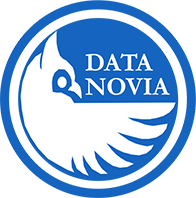Introduction
Containerized development has become a cornerstone of modern software engineering, offering consistency and scalability. However, sharing files between your local environment and containers can be challenging—especially on macOS. Mutagen provides a high-performance solution to synchronize files seamlessly, making it an excellent tool for integrating with Docker and devcontainer setups.
Creating and Managing Sync Sessions
One of the most powerful features of Mutagen is its ability to create sync sessions that continuously synchronize your local files with those inside a container. For example, suppose you want to sync your project repository located at /Users/kassambara/projects/ with the /projects/ directory inside a container named vscode-r. You can achieve this with a single command:
mutagen sync create --name vscoderMutagenSync --ignore "unwanted-folder/**" /Users/kassambara/projects/ docker://vscode-r/projects/Key points in this command:
--name vscoderMutagenSync: Assigns a unique name to your sync session.--ignore "unwanted-folder/**": Excludes theunwanted-folderdirectory from synchronization./Users/kassambara/projects/: The local source directory.docker://vscode-r/projects/: The target path inside the Docker container.
This command establishes a bidirectional synchronization between your host and container, ensuring that changes on either side are promptly mirrored.
Best Practices for Docker Integration
Ensure Target Directory Existence
Before initiating the sync, verify that the target directory (/projects/ in the container) exists. You can create it by running:
docker exec vscode-r mkdir -p /projectsThis precaution avoids potential sync errors.
Automation and Script Integration
For more complex workflows, consider writing scripts that:
- Automatically create or terminate sync sessions based on your development needs.
- Monitor the status of your sessions using
mutagen sync list. - Integrate with CI/CD pipelines to ensure that file synchronization remains robust across different stages of development.
Tips and Considerations
Monitor Your Sessions:
Usemutagen sync listto check the status of your sync sessions. This helps you quickly diagnose if a session is offline or experiencing conflicts.Regularly Update Your Setup:
As Mutagen evolves, keep an eye on new features or configuration options that may improve performance or compatibility with your Docker setups.Leverage Documentation:
The Mutagen official docs provide comprehensive details on advanced configuration and troubleshooting techniques.
Conclusion
Integrating Mutagen with Docker setups significantly enhances your development workflow by ensuring that file changes are synchronized in real time. Whether you are working locally or collaborating with a team, Mutagen’s features help overcome the limitations of traditional bind mounts—especially on macOS.
Further Reading
Explore More Articles
Here are more articles from the same category to help you dive deeper into the topic.
Reuse
Citation
@online{kassambara2025,
author = {Kassambara, Alboukadel},
title = {Using {Mutagen} with {Docker} and {Devcontainers:} {Seamless}
{Integration} for {File} {Synchronization}},
date = {2025-03-09},
url = {https://www.datanovia.com/learn/tools/mutagen/docker-integration.html},
langid = {en}
}
